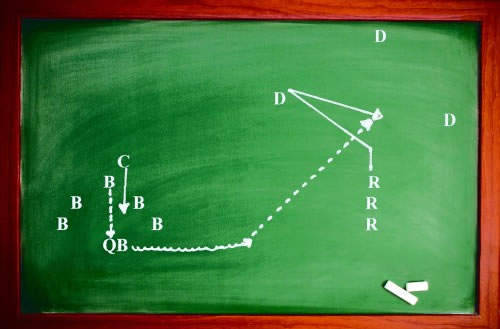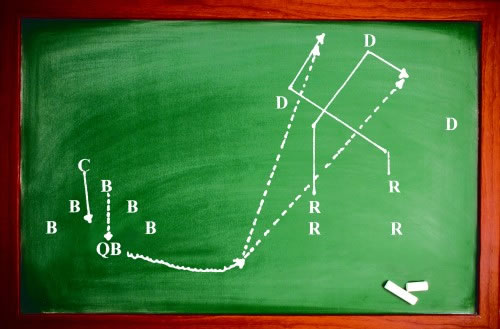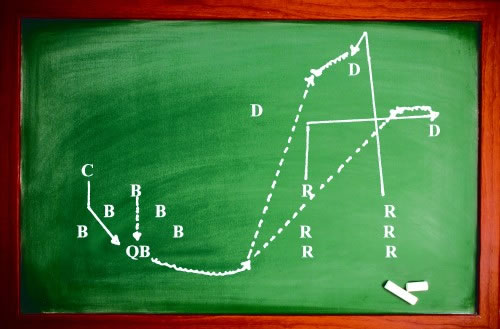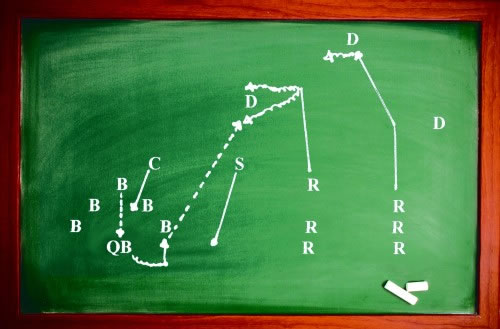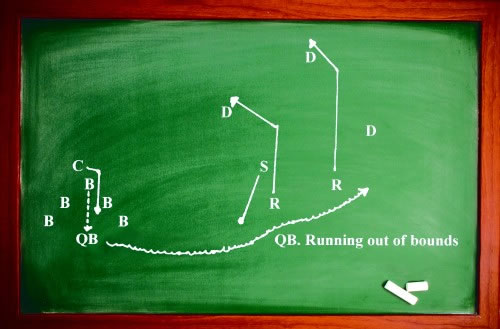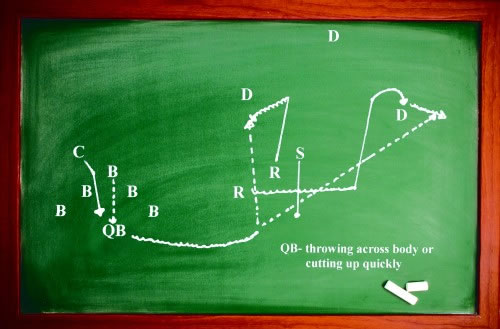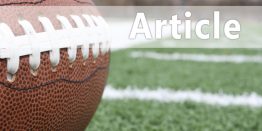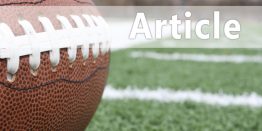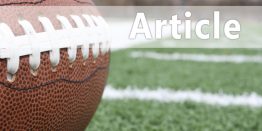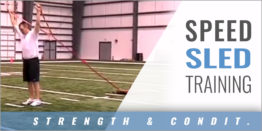| Pressure Packed - Game-like drills will help your
By: John Barnhart - Retired College and High School Coach Provided by: American Football Monthly
In today's offensive game plans, most teams have a spread attack that works out of the shotgun set. Teams run 60-65 plays per game with the quarterback in a drop back technique for most of the passing plays. Out of the number of passing plays called, at least 12-15 plays - on an average - force the quarterback out of the pocket or to retreat back into the middle of the pocket. This means at least one fourth of your pass plays have a QB making a decision to either run or pass while trying to avoid a sack or interception. Most coaches advise the QB in this situation to throw the ball away, don't lose yardage, or tuck the ball and get whatever you can. These are good points, but do you practice them? The following drills will help your QB make good decisions that you've practiced. By designing drills that are game-like, the QB will be in a better frame of mind to make better decisions for the team. In each drill, explain the situation to your QB and receivers. Explain how far to go for a first down, what down it is, and time if needed to stop the clock. Have your QB call the cadence so that everyone becomes familiar with the sound. You can also make this a defensive drill for linebackers and defensive backs so they can be effective in a situation late in the game or if the QB gets out of the pocket. Each drill is set up so that the coach or rush player makes the QB go out of the pocket or slide back up the middle while reading his receivers. You may also have the rush player not rush the QB so he does not run out of the pocket. We use a 2001, 2002 count before the rush comes at the QB. This gives time for the receivers to get open and for the QB to go through his progressions downfield. The drills allow the coach to talk to the QB throughout the drill and the receivers coach can direct the receivers at the same time. All the drills are set up to the right and then to the left so that the QB gets a feel for the situation he's in. We use barrels as offensive linemen with the coach aligned nearby in order to rush the QB. The three stand-up dummies are positioned in areas to the right or left of the QB as he tries to read the defense. The receivers work on patterns that are called for on each play. The receivers cut in front of the dummies and go behind to be covered. The receivers are told by the coach what to do in each situation.
Diagram 1 - In this drill, the QB breaks to his right, avoiding the rush and hits a receiver by reading the open area.
Diagram 2 - In this drill, the QB again breaks to his right with two receivers running deep crossing patterns. The QB chooses which one is open.
Diagram 3 - The QB breaks out of the pocket and throws to one of two receivers. Both receivers work back to the ball.
Diagram 4 - In this drill, a defensive player stunts from the outside, making the QB read the quick throw or run.
Diagram 5 - In this drill, the QB takes off and runs out of bounds. His two receivers that run deep are not open.
Diagram 6 - This drill also includes a blitz by the defense. The QB throws quickly across his body to one of two receivers.
Diagram 7 - The QB reads the stunt that is directly at him. He then breaks to his right and throws to one of two receivers. Other things that can be worked on are sliding so the QB does not take a direct hit. Also, when to throw the ball away. This can be done by putting more pressure on the QB with a number of defenders slanting and blitzing. Always remember to run the drills to both sides.
About the Author: Recently retired John Barnhart coached on both the high school and college level in Pennsylvania for 38 years. During that time, he served as a defensive coordinator, linebackers coach, and quarterbacks coach. He has also been the Field Coordinator for the Jim Kelly Football Camps for the past 26 years.
|



